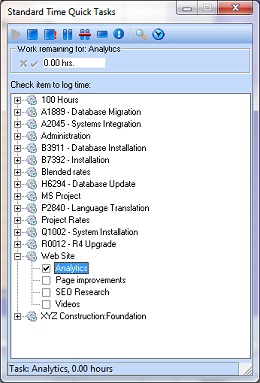It’s Thursday afternoon, and I’ve finished the Project Management Professional (PMP)® Certification Exam Boot Camp hosted by Dave Caccamo at ASPE and I’ve decided that it’s not a real Boot Camp because we didn’t fire any guns. I blame ASPE for the misleading title. 🙂
So aside from that little misunderstanding, I’d definitely go with the Boot Camp title – this is hardcore! If you like hardcore, get in on this course. If you don’t, maybe you can pass the PMI PMP Certification Exam on your own. Good luck with that!
Actually, I thought of doing that very thing about two years ago. I researched the PMI PMP exam, and strongly considered signing up for it. I figured I knew enough about project management to pass. Heck, it was probably just a bunch of terminology and best practices, right? I knew that stuff and figured I could pass. Now after taking this course, that idea seems so laughable. I probably would have had about a 1% chance of having my application accepted, let alone passing the exam. There is so much I didn’t realize about PMI and their PMP exam and their expectations of project managers.
This course enlightened me considerably.
We spent the last day finishing up the 42 PMI project management processes. That included those from the Executing, Monitor and Control, and Closing process groups. This is where the Initiating and Planning processes are performed. After finishing those, we took a final test quiz and finished out the course. Anyone with a low 70’s grade on the final quiz should feel comfortable moving forward with the PMP exam after a reasonable study period. So I guess I’m good.
I have to say, even though we stuck closely to the PMI processes, this classroom offered a perfect setting for a wide range of project management topics. It wasn’t all PMI Process Heaven. All the methodologies came out eventually, with comparisons to PMI – the good, the bad, and the ugly – and how real-world PM’s get things done. So felt I grew a little outside the sanctioned course material.
One thing to stress is that you cannot come riding into this course on your high horse. Don’t think you are going teach everyone how wise you are in the world of project management. Get ready to submit yourself to the PMI method, even if you disagree with it. There just isn’t time to argue platitudes. You’ll miss the whole point, and likely ruin your chances of passing the exam. Stick to the subject matter and you’ll be farther ahead.
I hope you have enjoyed the series. I offer my sincere apologies to those in the PMI world for oversimplifying, misunderstanding, and perhaps misrepresenting the material. Again, this was my personal experience of going through the PMP Certification Exam Boot Camp. You’re seeing it through my limited experience level – a complete novice to PMI and the PMP exam. Your mileage may vary.
My Notes on Day 4 of PMP Boot Camp:
Focus on being able to write out PMBOK matrix in its entirety.
Practice PMP cert exam write-ups. Make sure you have some experience for every process group, even if it’s light or it may not be accepted. Must use some PMI buzzwords, but not an obvious list from page 43 of PMBOK. Go into some detail in one or more areas, a success. No technical details, no technical lead. All details should be PM related. Connect PMI processes to show project success. If you were a team member without a formal PM title, you’ll have to come up with something related – descriptive rather than formal titles. How you integrated processes, management deliverables. You can still get away with a “Project Task Manager” title.
Send your PMI write-up to Dave Caccamo at ASPE before submitting. He can tell whether it will be accepted.
Use the patterns for learning process inputs and outputs. At this point, I know I should be doing this, but haven’t memorized the patterns, so I forget them. I suppose I didn’t know the significance of the patterns early enough. Pretty important, or else you have to memorize all inputs and outputs without a framework of logic. PMI doesn’t like simplified pattern style of learning.
A spaghetti factory is what you get if you try to show flowcharted rubber band connections between all the inputs and outputs. It’s just too complex to draw out.
Turn brain cells over to PMI.
Read PMBOK for Monitoring and Controlling (and Closing) Process Group. Closing Process Group questions may be tricky and picky.
PMP cert pass rate is about 70%, and the average score is 72%, but PMI doesn’t publish this info.
Get the “Random Thoughts on the PMI Exam” document from Dave Caccamo. Answers a lot of questions.
After drawing the matrix every day (before exam), name one major output to help key you during the test.
Links to previous ASPE PMP Boot Camp posts
Disclaimer: The thoughts and feedback for the ASPE PMP Certification Exam Boot Camp associated with this series of posts are my own. In exchange for providing my feedback on this community forum, ASPE has provided benefits related to my course attendance.



